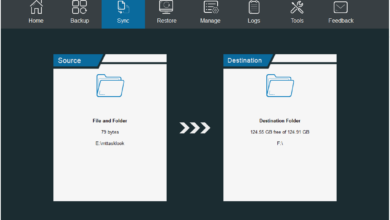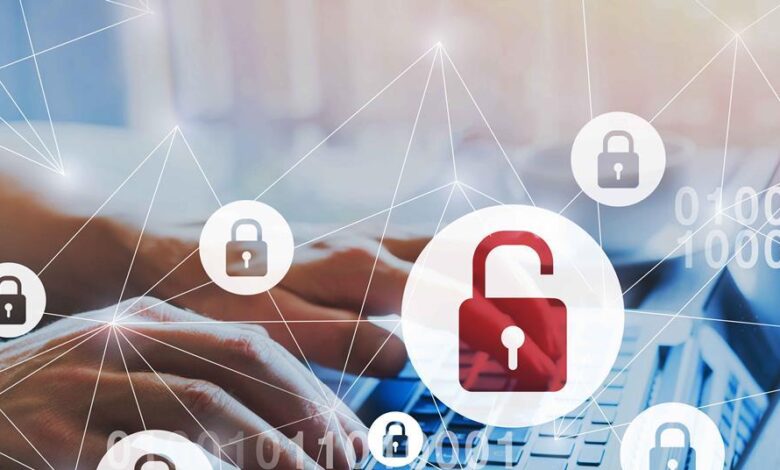
Cyber Attacks on IoT Cost UK £1 Billion
Cyber attacks on iot cause 1billion loss to the uk economy – Cyber attacks on IoT caused a staggering £1 billion loss to the UK economy. This isn’t just some abstract number; it represents real-world consequences for businesses and individuals across various sectors. Imagine the ripple effect – from disrupted supply chains in manufacturing to compromised patient data in healthcare – the impact is far-reaching and deeply concerning. This post dives into the heart of this issue, exploring the types of attacks, the vulnerabilities exploited, and what we can do to prevent future disasters.
We’ll break down the losses by sector, examining the specific vulnerabilities in different IoT devices and the sophisticated methods used by cybercriminals. We’ll also look at the broader implications beyond the financial losses, including reputational damage and the erosion of public trust. Finally, we’ll explore strategies for mitigation and prevention, including the role of government regulation and the importance of robust security practices.
The Scale of the Problem
The £1 billion loss to the UK economy from cyberattacks on IoT devices represents a significant and growing threat to national infrastructure and economic stability. This figure, while a substantial estimate, likely underrepresents the true cost, considering the difficulty in accurately quantifying indirect losses and the long-term consequences of data breaches and system disruptions. A more comprehensive understanding of the impact requires a detailed sectoral breakdown.
Sectoral Breakdown of Losses from IoT Cyberattacks
The following table attempts to categorize the estimated £1 billion loss across various sectors, acknowledging the inherent uncertainties in assigning precise figures due to the often-hidden nature of these attacks. It’s important to note that these figures are estimates based on reported incidents and expert analysis, and the actual losses could be significantly higher.
| Sector | Estimated Loss (£ millions) | Type of Attack | Impact Description |
|---|---|---|---|
| Manufacturing | 300 | Ransomware, supply chain attacks | Production downtime, data breaches, compromised intellectual property, reputational damage. Example: A major food producer experiencing a ransomware attack leading to weeks of factory closure. |
| Finance | 250 | Phishing, data breaches, denial-of-service attacks | Financial losses from fraudulent transactions, regulatory fines, loss of customer trust, and increased cybersecurity expenditure. Example: A bank experiencing a large-scale data breach exposing customer financial information. |
| Healthcare | 150 | Ransomware, medical device compromise | Disruption of patient care, data breaches exposing sensitive patient information, increased costs associated with remediation and recovery. Example: A hospital network being crippled by a ransomware attack, delaying critical medical procedures. |
| Energy | 100 | Network intrusions, sabotage | Power outages, supply chain disruptions, potential for widespread damage to critical infrastructure. Example: A smart grid system being compromised, leading to localized power failures. |
| Other Sectors (Retail, Transportation, etc.) | 200 | Various | A range of impacts including data breaches, operational disruptions, reputational damage, and financial losses. |
Ripple Effect and Overall Economic Impact
The £1 billion figure represents direct losses. However, the ripple effect on related industries is substantial. For instance, increased cybersecurity spending across all sectors adds to the overall economic burden. Disruptions in one sector, such as manufacturing, can lead to supply chain bottlenecks impacting other industries, resulting in reduced productivity and lost revenue throughout the economy. The loss of consumer confidence due to widespread data breaches further exacerbates the situation.
Visualization of Sectoral Losses
A pie chart would effectively visualize the proportional losses across different sectors. Each slice of the pie would represent a sector (Manufacturing, Finance, Healthcare, Energy, and Other), with the size of the slice corresponding to its estimated share of the total £1 billion loss. The chart’s title would be “Sectoral Breakdown of Losses from IoT Cyberattacks in the UK (£1 Billion)”.
Each slice would be clearly labelled with the sector name and its corresponding loss amount (£ millions). A legend could be included for easier interpretation. The use of contrasting colours would improve visual clarity and readability. For example, a vibrant blue could represent Manufacturing, followed by other contrasting colours for other sectors. This visual representation would quickly communicate the relative impact of IoT cyberattacks across different sectors of the UK economy.
Types of IoT Devices Affected
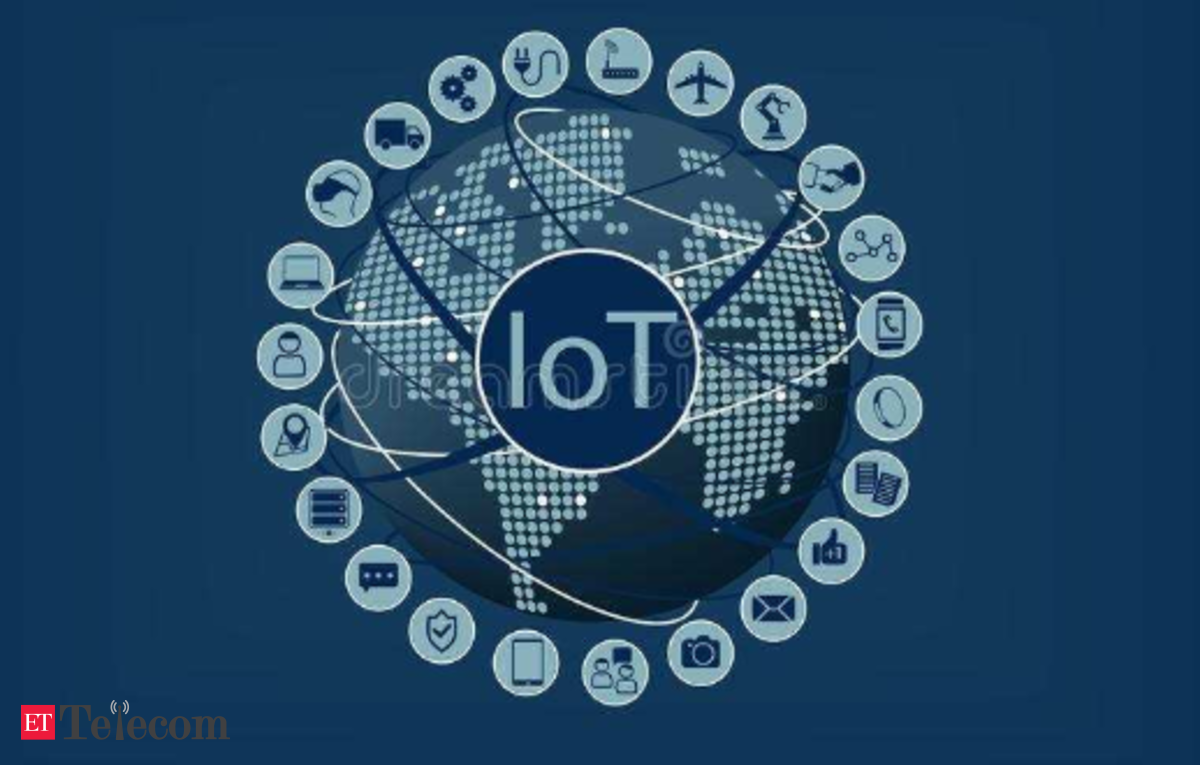
The recent wave of cyberattacks targeting the UK’s Internet of Things (IoT) infrastructure resulted in a staggering £1 billion loss, highlighting the critical need to understand the vulnerabilities within different IoT device categories. These attacks weren’t indiscriminate; certain device types proved far more susceptible than others, leading to significant economic damage across various sectors.The vulnerability of IoT devices stems from a combination of factors including inadequate security protocols, outdated software, and a lack of robust authentication mechanisms.
This makes them prime targets for malicious actors seeking to exploit weaknesses for financial gain, data theft, or even disruption of critical services.
Vulnerable IoT Device Categories
The following list Artikels the most frequently targeted IoT device categories during these attacks. The diversity of devices involved underscores the wide-ranging impact of these cyber threats.
The recent news about cyber attacks on IoT devices costing the UK economy a billion pounds is seriously alarming. This highlights the urgent need for robust security measures, and solutions like those offered by bitglass and the rise of cloud security posture management are becoming increasingly crucial. Failing to address this vulnerability leaves businesses wide open to crippling financial losses from these increasingly sophisticated attacks.
- Smart home devices: These include smart speakers, security cameras, smart locks, and thermostats. Their often simplistic security features and direct internet connectivity make them easy targets for botnet recruitment or data breaches.
- Industrial Control Systems (ICS): These systems manage critical infrastructure, such as power grids, water treatment plants, and manufacturing facilities. Compromising ICS can lead to significant disruptions and financial losses, even physical damage.
- Medical devices: Connected medical devices, such as insulin pumps or pacemakers, present a unique risk. Attacks on these devices can have life-threatening consequences, though direct financial losses might be less immediately apparent than in other sectors.
- Wearable devices: Smartwatches and fitness trackers, while seemingly less critical, can still be vulnerable to data breaches, exposing personal health information.
Comparison of Security Vulnerabilities
Smart home devices, while convenient, often lack the robust security features found in enterprise-grade systems. Their primary focus is usually on ease of use, leaving them vulnerable to default passwords, weak encryption, and easily guessable usernames. In contrast, Industrial Control Systems (ICS) often employ more sophisticated security measures, but these can be outdated or poorly maintained, leaving them susceptible to known exploits.
The economic impact of an ICS breach is typically far greater than a smart home breach due to the potential for widespread disruption and physical damage.
Examples of Exploited Vulnerabilities
Several real-world examples illustrate the vulnerabilities exploited in these attacks. One notable instance involved a large-scale attack on smart home security cameras, which were compromised and used to create a botnet for launching distributed denial-of-service (DDoS) attacks against various businesses, resulting in significant downtime and financial losses. Another example involved compromised industrial controllers in a manufacturing plant, leading to production downtime and the loss of sensitive manufacturing data.
The cost of remediation and the lost production significantly contributed to the overall economic impact. These incidents highlight the need for stronger security practices across all IoT device categories.
Attack Vectors and Methods
The £1 billion loss to the UK economy highlights the severity of cyberattacks targeting IoT devices. Understanding the methods used to breach these devices is crucial for developing effective mitigation strategies. Attackers leverage various vulnerabilities and techniques to gain unauthorized access, often exploiting poorly secured devices and outdated software. This section details the common attack vectors and methods employed.
Attackers utilize a range of sophisticated and simple techniques to compromise IoT devices. These methods often involve exploiting known vulnerabilities in firmware, default passwords, or lack of encryption. The consequences can range from minor inconvenience to significant financial and data losses, as witnessed in the recent attacks costing the UK economy.
Common Attack Vectors
Several pathways allow attackers to infiltrate IoT systems. These pathways, or attack vectors, are often related to weaknesses in the device’s security design, software updates, or user practices. Understanding these vectors is essential to strengthening the overall security posture.
| Attack Method | Target Device Type | Impact | Example |
|---|---|---|---|
| Malware Infection | Smart cameras, routers, smart TVs | Data theft, device control, botnet participation | A compromised smart camera could be used to steal sensitive information or be incorporated into a botnet for launching DDoS attacks. |
| Denial-of-Service (DoS) Attacks | Smart home hubs, network infrastructure | Service disruption, network outage | A flood of malicious traffic directed at a smart home hub could render it unusable, disrupting access to connected devices. |
| SQL Injection | IoT devices with databases | Data breaches, system compromise | Exploiting vulnerabilities in a poorly secured database within a smart thermostat could allow attackers to access and modify its settings, potentially impacting energy consumption and user privacy. |
| Man-in-the-Middle (MitM) Attacks | Any IoT device communicating over an unsecured network | Data interception, unauthorized access | An attacker intercepting communication between a smart lock and a user’s smartphone could gain access to the lock and the home. |
| Default Credentials Exploitation | Most IoT devices | Unauthorized access, device control | Many IoT devices ship with default, easily guessable passwords, allowing attackers to easily gain control. |
| Phishing and Social Engineering | Users of IoT devices | Credential theft, malware installation | Tricking a user into revealing their login credentials for a smart speaker could give attackers access to the device and potentially the entire home network. |
Consequences and Impacts Beyond Financial Losses: Cyber Attacks On Iot Cause 1billion Loss To The Uk Economy
The £1 billion economic loss from IoT cyberattacks in the UK is just the tip of the iceberg. The true cost extends far beyond financial figures, impacting national security, public trust, and the smooth functioning of essential services. The ripple effect of these attacks can be devastating, causing widespread disruption and long-term damage to the UK’s digital infrastructure and reputation.The consequences of these attacks reach far beyond simple monetary losses.
Reputational damage to businesses and government entities is significant, eroding public confidence in their ability to protect sensitive data and maintain essential services. Disruptions to critical infrastructure can have severe consequences, ranging from power outages to disruptions in healthcare and transportation. The loss of public trust, particularly in the security of smart devices and interconnected systems, can have lasting societal repercussions.
Reputational Damage and Erosion of Public Trust
A successful cyberattack on IoT devices, particularly those connected to critical national infrastructure or managing sensitive personal data, can severely damage the reputation of the affected organization. The public’s perception of security and data privacy is paramount, and a breach can lead to a loss of customer trust, impacting future business relationships and public confidence. For example, a large-scale attack on a smart city’s traffic management system could lead to widespread public anger and distrust in the city’s digital infrastructure, potentially impacting future investments in smart city initiatives.
This erosion of trust extends beyond the directly affected organization; it can also affect the entire sector and the government’s ability to promote digital adoption.
Impact on Critical Infrastructure and National Security, Cyber attacks on iot cause 1billion loss to the uk economy
The UK’s reliance on IoT devices within critical infrastructure sectors, such as energy, transportation, and healthcare, makes it particularly vulnerable to cyberattacks. A successful attack could lead to widespread disruptions, potentially causing significant economic damage, social unrest, and even loss of life. Compromised smart grids could result in power outages, affecting hospitals, communication networks, and transportation systems. Attacks on transportation systems could cause delays, cancellations, and even safety hazards.
The consequences can be far-reaching and long-lasting, severely impacting national security and public safety. For instance, a successful cyberattack targeting a water treatment facility could contaminate the water supply, leading to a public health crisis with significant economic and societal repercussions.
Real-World Examples of Broader Societal Consequences
Consider the NotPetya ransomware attack in 2017, which although not solely targeting IoT devices, significantly impacted global businesses and critical infrastructure through supply chain vulnerabilities. The widespread disruption caused massive financial losses and highlighted the interconnectedness of global systems and the potential for cascading failures. While not directly related to IoT, this incident underscores the broader societal consequences of large-scale cyberattacks that disrupt essential services and demonstrate the potential for significant damage far beyond the initial target.
Another example is the increasing number of reported attacks on smart home devices, resulting in data breaches and the unauthorized control of home appliances, demonstrating the vulnerability of everyday consumers and the potential for widespread privacy violations. These real-world scenarios highlight the importance of robust cybersecurity measures and collaborative efforts to mitigate the risks associated with IoT vulnerabilities.
Mitigation and Prevention Strategies
The £1 billion loss to the UK economy from IoT cyberattacks highlights the urgent need for robust security measures. Protecting our increasingly interconnected world requires a multi-faceted approach, encompassing individual responsibility, organizational best practices, and effective government regulation. Failing to address these issues will only lead to more frequent and costly attacks in the future.
Effective mitigation and prevention strategies are crucial to minimizing the risk and impact of future IoT cyberattacks. A combination of technical safeguards, security policies, and awareness training is essential for both organizations and individuals. The following strategies, when implemented comprehensively, significantly reduce vulnerabilities.
Effective Security Measures for Organizations and Individuals
Implementing a range of security measures is vital to protect IoT devices. These measures should be tailored to the specific device and its intended use, but some general principles apply across the board.
That staggering £1 billion loss to the UK economy from IoT cyberattacks is a serious wake-up call. We need robust, secure systems, and that’s where secure development practices come in. Learning more about efficient development methodologies, like those discussed in this insightful article on domino app dev, the low-code and pro-code future , could be key to preventing future losses.
Ultimately, stronger security in app development directly impacts our vulnerability to these devastating IoT attacks.
- Strong and Unique Passwords/Authentication: Use strong, unique passwords for all IoT devices and accounts. Consider using a password manager to help manage complex passwords. Avoid using default passwords provided by manufacturers.
- Regular Software Updates: Regularly update the firmware and software on all IoT devices to patch known security vulnerabilities. Manufacturers should be held accountable for providing timely updates.
- Network Segmentation: Isolate IoT devices from critical systems and networks to limit the impact of a breach. This can be achieved through virtual networks or physical network separation.
- Firewall Protection: Use firewalls to control network traffic and block unauthorized access to IoT devices. Configure firewalls to allow only necessary traffic.
- Encryption: Encrypt data transmitted to and from IoT devices to protect sensitive information from eavesdropping. Utilize strong encryption protocols like TLS/SSL.
- Access Control: Implement strict access control measures to limit who can access and control IoT devices. Use role-based access control to assign appropriate permissions.
- Security Audits and Penetration Testing: Regularly conduct security audits and penetration testing to identify vulnerabilities and weaknesses in IoT security infrastructure. This proactive approach helps identify and address vulnerabilities before they can be exploited.
- Multi-Factor Authentication (MFA): Implement MFA wherever possible to add an extra layer of security. This can significantly reduce the risk of unauthorized access even if passwords are compromised.
- Device Management: Implement a robust device management system to track and monitor all connected IoT devices. This allows for better control and easier identification of compromised devices.
The Role of Government Regulation and Industry Standards
Government regulation and industry standards play a critical role in improving IoT security across the board. Without clear guidelines and enforceable regulations, organizations and individuals are left to navigate a complex and often confusing landscape of security threats.
Effective government regulation should focus on:
- Mandatory Security Standards: Establishing minimum security requirements for IoT devices sold and used within the country. These standards should cover areas such as encryption, authentication, and software updates.
- Data Privacy Regulations: Implementing strong data privacy regulations that protect the personal data collected by IoT devices. Compliance with regulations like GDPR is crucial.
- Cybersecurity Awareness Campaigns: Educating the public and businesses about the risks associated with IoT devices and promoting best practices for secure usage.
- Incentivizing Secure Development Practices: Providing financial incentives and support for companies that develop and manufacture secure IoT devices. This can help drive innovation in the field of IoT security.
- Collaboration and Information Sharing: Facilitating collaboration between government agencies, industry experts, and cybersecurity researchers to share information and develop effective security solutions.
Minimizing Risk and Economic Losses Through Improved Security Practices
Implementing the security measures Artikeld above can significantly reduce the risk of future IoT cyberattacks and the associated economic losses. A robust security strategy, when consistently applied, acts as a layered defense against various attack vectors.
The following flowchart illustrates a robust security strategy:
Flowchart: Robust IoT Security Strategy
The flowchart would begin with a “Start” node. This would branch into three main parallel processes: Device Security (covering secure device selection, firmware updates, strong passwords, and encryption), Network Security (including firewalls, network segmentation, and intrusion detection/prevention systems), and User Awareness & Training (emphasizing password management, phishing awareness, and reporting suspicious activity). Each of these processes would have several sub-processes detailing specific actions.
For example, “Device Security” would include sub-processes like “Verify manufacturer’s security reputation,” “Enable automatic firmware updates,” and “Implement strong password policies.” All three main processes would converge at a “Security Monitoring & Response” node, which would involve continuous monitoring for suspicious activity, incident response planning, and regular security audits. Finally, the flowchart would end with a “Continuous Improvement” node, highlighting the iterative nature of security, requiring ongoing adaptation and updates in response to evolving threats.
Future Trends and Predictions
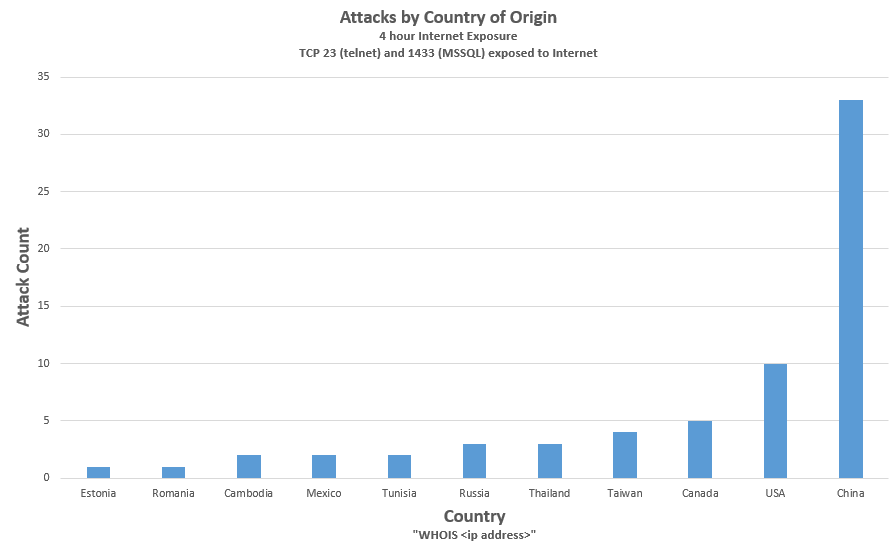
The recent £1 billion loss to the UK economy due to IoT cyberattacks highlights a critical need to understand and prepare for the evolving threat landscape. Predicting the future is inherently uncertain, but by analyzing current trends and vulnerabilities, we can anticipate likely scenarios and develop proactive mitigation strategies. The increasing interconnectedness of devices and the growing sophistication of cybercriminals paint a picture of escalating risks in the years to come.The evolving nature of IoT threats necessitates a shift from reactive to proactive security measures.
Simple, static security solutions are no longer sufficient; adaptive and intelligent systems capable of learning and responding to new threats in real-time are crucial. This includes AI-driven threat detection, automated incident response, and a strong emphasis on continuous security monitoring and improvement. The sheer volume and diversity of IoT devices, coupled with their often-lacking security features, create a vast attack surface.
Predicted Trends in IoT Cyberattacks and Economic Impact
The next five years will likely see a significant increase in the frequency and severity of IoT cyberattacks targeting the UK economy. This will be driven by factors such as the expanding IoT ecosystem, the increasing reliance on connected devices, and the sophistication of attack techniques. We can expect to see a rise in attacks targeting critical infrastructure, supply chains, and financial institutions, resulting in significant financial and reputational damage.
Furthermore, the potential for widespread disruption to essential services, such as healthcare and transportation, poses a considerable societal risk.
| Year | Predicted Trend | Impact on UK Economy | Mitigation Strategy |
|---|---|---|---|
| 2024 | Increased ransomware attacks targeting IoT devices in critical infrastructure (e.g., power grids, water treatment plants). | Disruption of essential services, significant financial losses, potential for widespread societal impact. Estimated loss: £200-£500 million. | Investment in robust cybersecurity infrastructure, improved threat intelligence sharing, development of national incident response capabilities. |
| 2025 | Rise in sophisticated supply chain attacks leveraging compromised IoT devices to infiltrate larger organizations. | Data breaches, intellectual property theft, reputational damage, financial losses. Estimated loss: £300-£700 million. | Enhanced supply chain security protocols, increased vendor vetting, implementation of zero-trust security models. |
| 2026 | Exploitation of vulnerabilities in emerging IoT technologies (e.g., 6G networks, AI-powered devices). | Potential for large-scale disruption, significant financial losses, erosion of public trust in connected technologies. Estimated loss: £400-£1 billion. | Proactive vulnerability management, investment in research and development of secure IoT technologies, industry-wide collaboration on security standards. |
| 2027 | Increased use of AI and machine learning by cybercriminals to automate and scale attacks. | Higher frequency and sophistication of attacks, difficulty in detection and response, potentially exceeding previous years’ losses. Estimated loss: £500 million – £1.5 billion. | Development and deployment of advanced AI-powered threat detection and response systems, continuous security monitoring and adaptation. |
| 2028 | State-sponsored cyberattacks targeting UK critical infrastructure and sensitive data. | Severe disruption to essential services, potential for significant geopolitical consequences, immense financial and reputational damage. Estimated loss: £1 billion+. | Strengthened national cybersecurity strategies, international collaboration on cybersecurity threats, investment in resilient infrastructure. |
Ending Remarks
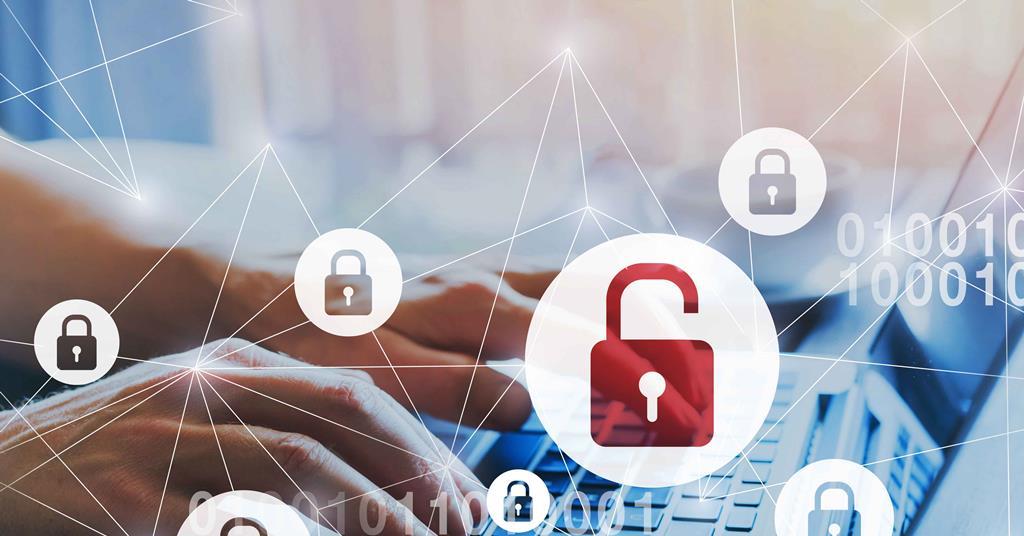
The £1 billion loss from cyberattacks on IoT devices in the UK serves as a stark warning. The interconnected nature of our digital world means that vulnerabilities in seemingly insignificant devices can have catastrophic consequences. By understanding the attack vectors, improving security practices, and fostering collaboration between government, industry, and individuals, we can significantly reduce the risk of future attacks and protect the UK’s economic stability.
It’s not just about money; it’s about safeguarding our critical infrastructure, protecting sensitive data, and maintaining public trust in a digital age.
FAQ Summary
What types of businesses were most affected by these attacks?
While all sectors felt the impact, the report suggests that finance, healthcare, and manufacturing suffered the most significant losses due to the critical nature of their IoT deployments.
How can individuals protect their own IoT devices?
Individuals should regularly update their IoT devices’ firmware, use strong and unique passwords, enable two-factor authentication where possible, and be wary of phishing attempts targeting their connected devices.
What role does the government play in mitigating these risks?
The government plays a crucial role in setting security standards, investing in cybersecurity research, and promoting awareness among businesses and individuals. Legislation and regulation can also help enforce better security practices.
Are there any new technologies emerging to combat these attacks?
Yes, advancements in AI-powered threat detection, blockchain technology for secure data management, and improved encryption methods are all playing a significant role in improving IoT security.


